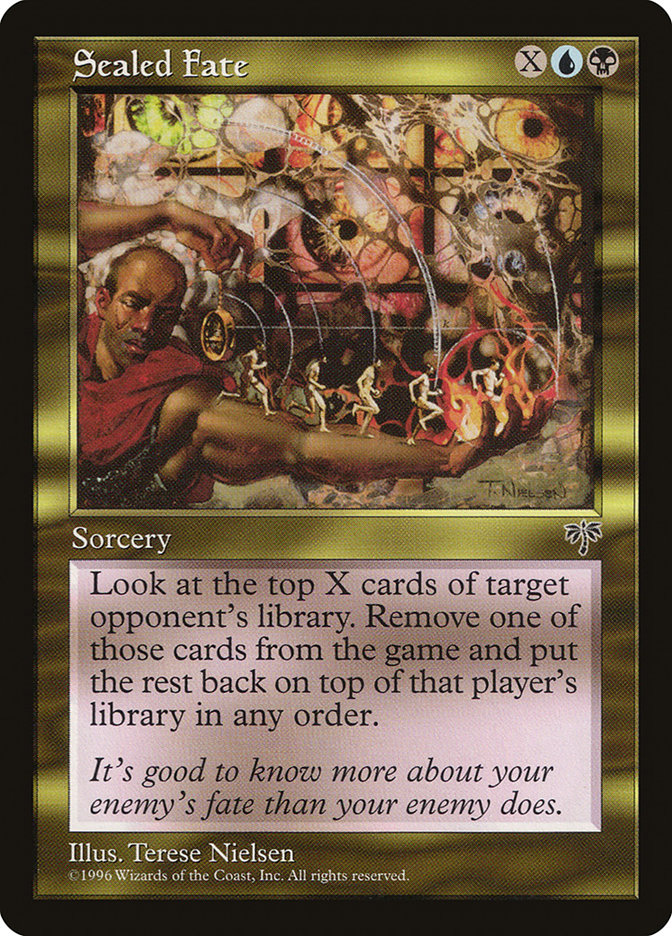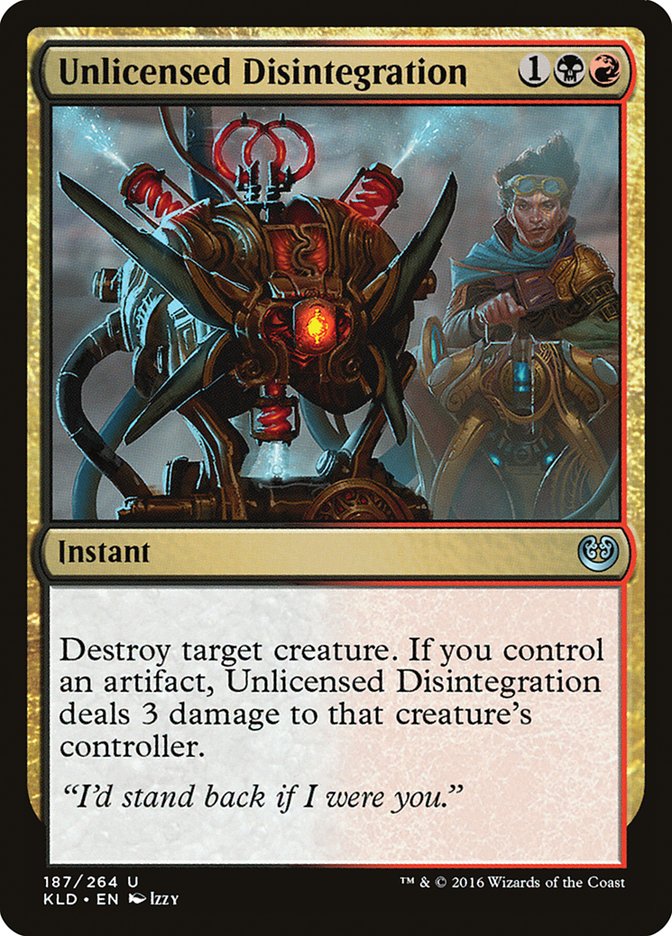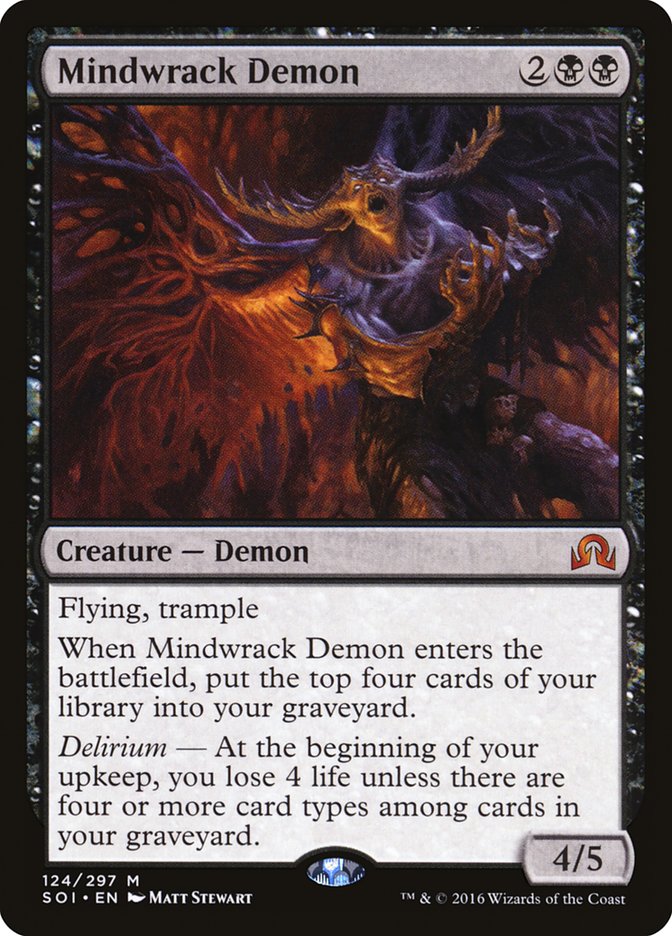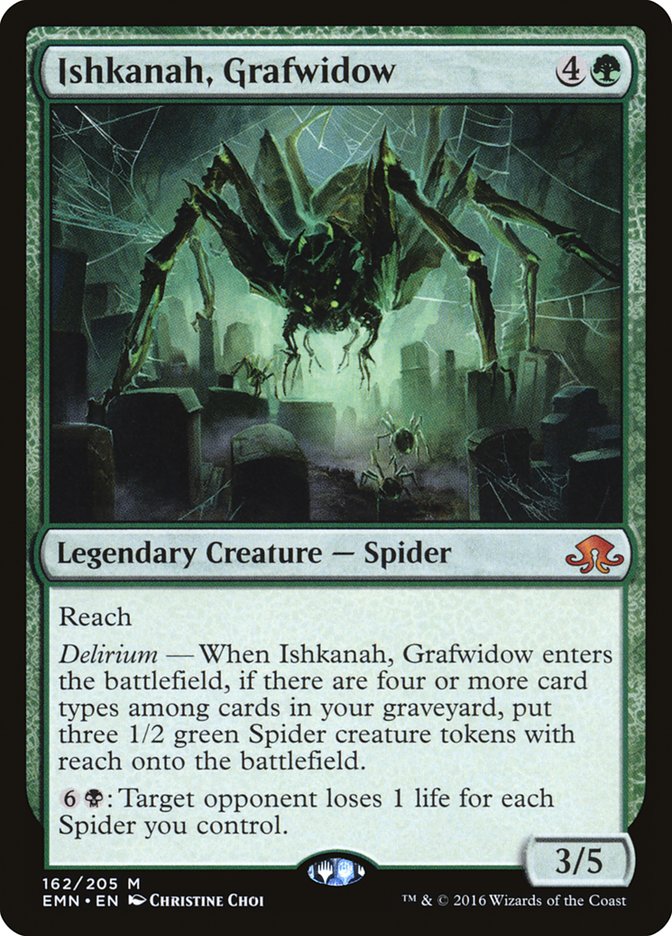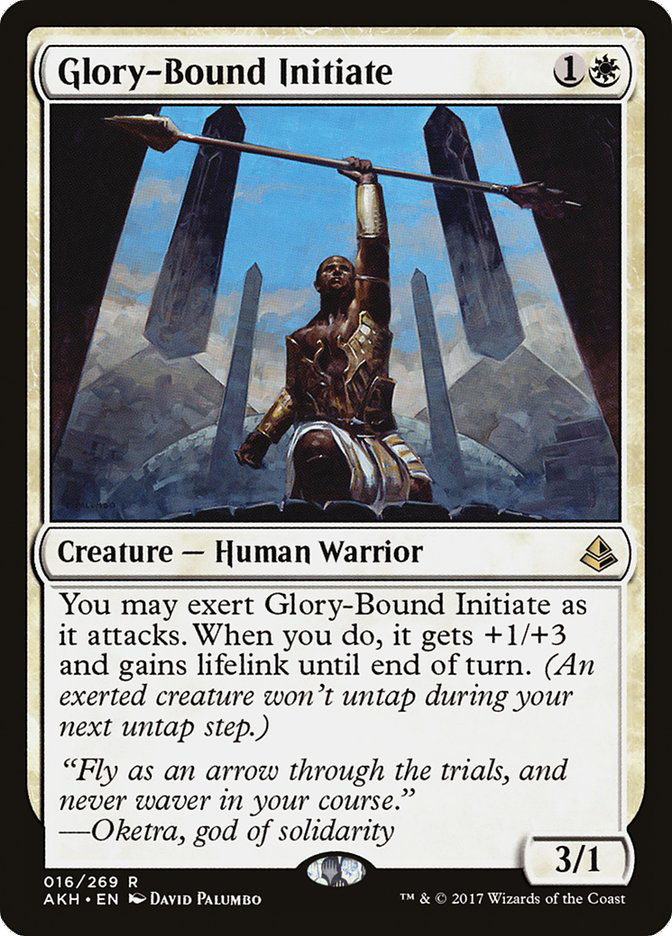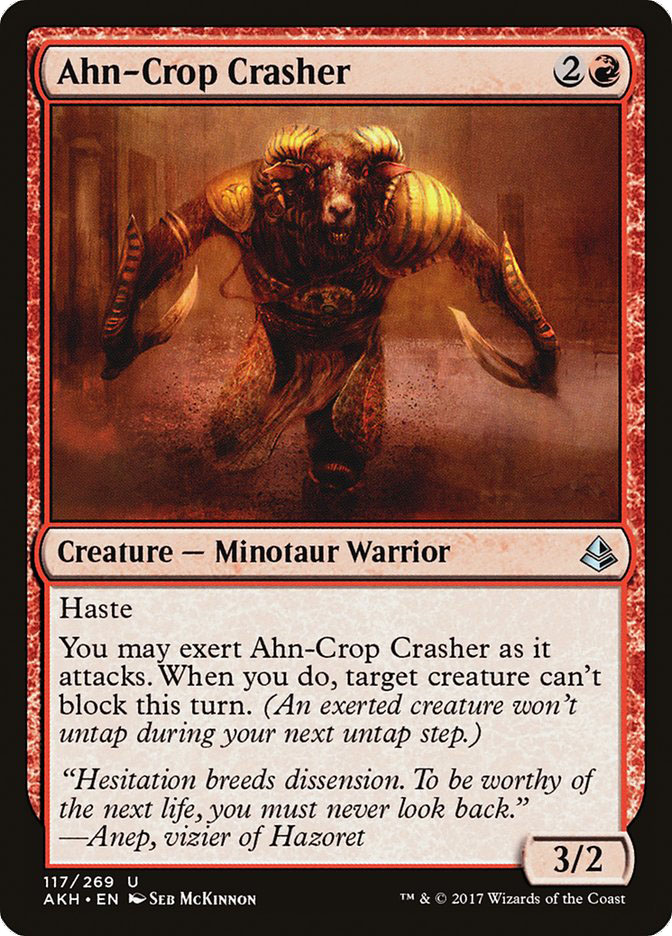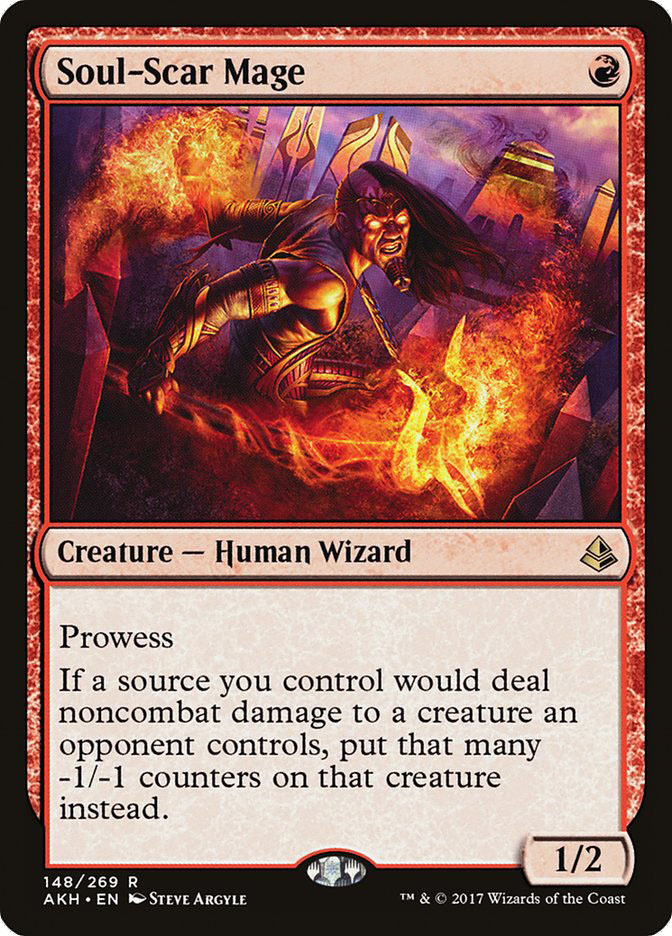After #SCGATL last weekend, there’s only one question on everyone’s mind: will Mardu Vehicles reign supreme throughout Amonkhet Standard? It’s hard to not be worried about a one-deck format after a single deck takes five of the Top 8 slots and makes up a full quarter of the Top 64.
Still, that’s not the question I’m asking right now.
You see, I’m convinced that the reign of Mardu Vehicles will be short-lived. Frankly, I’d be very surprised if it managed to retain its title of best-performing deck at the Pro Tour in two weeks, and I expect the Standard landscape to be vastly altered by the time #SCGKY rolls around in three. So instead of fretting about the potential for a boring one-deck Standard format, I’m trying to figure out what the format will look like after the Mardu nut is finally cracked.
The Rise and Fall of Mardu
“But Jadine,” you say,” how can you be so sure?” Well, there were a lot of factors in Mardu’s favor last weekend. I don’t want to spend too much time rehashing of all the community hot takes on why Mardu was able to be so dominant in Atlanta, but it’s important to have this context out there. So here’s the quick one-minute version. For best effect, I recommend reading this next paragraph out loud to yourself as quickly as you can in your best rant voice.
We took a two-deck format, banned one of the decks two days before the tournament, and are now acting surprised that the other deck was the best deck. The aggressive stylings of Mardu Vehicles are well-suited to beating up on untuned Week 1 lists. Everyone got so excited by their freedom to tap out they forgot to respect Unlicensed Disintegration. Card availability issues always plague Week 1 events, and having less time due to last-minute bans only compounds the issue and heavily favors established decks. Gideon, Ally of Zendikar is a completely unfair Magic card.
All right, go ahead and slow down. The moral of the story is that #SCGATL was very likely the single event in SCG Tour history with the most chaos surrounding it, and that chaos heavily favored Mardu Vehicles. It’s not a pretty or elegant answer to the question of why Mardu did so well, nor is it the whole picture, but it is an important piece of the puzzle that we shouldn’t ignore.
But for our purposes of trying to figure out where the format is headed from here, understanding the ephemeral “why” of Mardu’s dominance is less important than getting a good grasp of the “how.” What were the specific decisions made right by Mardu players and wrong by nearly everyone else that led us to this point?
Creatures (18)
- 2 Archangel Avacyn
- 4 Thraben Inspector
- 2 Thalia, Heretic Cathar
- 4 Scrapheap Scrounger
- 4 Toolcraft Exemplar
- 2 Walking Ballista
Planeswalkers (4)
Lands (20)
Spells (18)

Let’s start with what Mardu Vehicles did right. Take a look at Andrew Jessup’s #SCGATL-winning decklist above. Amonkhet didn’t change the Mardu deck very much. Cut//Ribbons is a solid addition to the deck that solidifies what the deck wants to do in a couple of key matchups, but it’s nothing to write home about. Canyon Slough allows the deck to go up to 25 lands, increasing its consistency. Again, not a dramatic effect. While all the other decks were experimenting with shiny new toys, Mardu just quietly adopted the cards that let the deck improve slightly at what it had already been doing and let all the potential new angles to explore sit on the sidelines for this tournament.
Meanwhile, other decks did not manage to handle the transition to Amonkhet Standard so gracefully. G/B strategies coalesced, for the most part, around B/G Delirium, attempting to cash in on the power of Liliana, Death’s Majesty alongside Ishkanah, Grafwidow. The new Liliana is absolutely powerful, but she underperformed last weekend and I believe that to be due to lists not being built quite right yet. Interestingly, the best-performing Delirium list of the weekend was the one that looked the least new.
Creatures (15)
- 2 Tireless Tracker
- 2 Ishkanah, Grafwidow
- 4 Grim Flayer
- 2 Gonti, Lord of Luxury
- 1 Noxious Gearhulk
- 3 Walking Ballista
- 1 Manglehorn
Planeswalkers (4)
Lands (17)
Spells (24)

The only B/G Delirium player to make the Top 8, Brennan DeCandio barely touched Amonkhet in his deckbuilding for this tournament. Instead he stuck close to previous Standard B/G Delirium lists, not taking very many risks on unproven cards. Maybe it was that mindset of “tried and true” that kept him away from Mindwrack Demon, unlike most of the other B/G Delirium lists in the Top 64. Mindwrack Demon is incredibly weak to Unlicensed Disintegration, and its popularity last weekend is my pick for the biggest reason that Mardu Vehicles outperformed Delirium strategies.
The story with other archetypes is similar. Pilots who stuck close to old builds of decks tended to perform better than those who radically shifted their builds to try and accommodate the influx of new Amonkhet cards and the exodus of every form of Saheeli combo. This is a temporary effect, magnified this weekend by the close proximity of the Felidar Guardian ban. In a couple of weeks with more play under our belts, running new cards will no longer be so heavily punished. Time will fix the Mardu problem.
And hey, if you don’t believe me, just go take a look at what the recent Magic Online results look like.
All Things Big
I think one of the big edges Mardu Vehicles has in the format right now is that it’s somehow getting away with being both an aggro and a control deck. The planeswalker package that Mardu is spending the majority of its sideboard slots on was innovated in the middle of Aether Revolt Standard and has been a huge boon to the archetype ever since. Normally, Magic formats don’t allow decks to hedge their bets like this, effectively letting them have their control cake and eat their opponent’s life points too, but here we are.
I blame Four-Color Saheeli for Mardu’s ability to bamboozle the rules of Magic metagames like this. The presence of a consistent and powerful two-card combo warped the format in unhealthy ways, forcing every deck to go very low to the ground so they could keep mana up on relevant turns against Four-Color. Now that Felidar Guardian has been banned, this pressure on the format has been alleviated. Soon we will see decks go bigger, no longer needing to stay low in the world of two-drops. These decks existing will invalidate Mardu’s plan of being both aggro and control and force it to commit more heavily to one role or the other.
Let’s take a look at some of the contenders vying to be the “go big” hero Magic needs right now.
When someone starts talking about control in Standard these days, the first place my mind turns is Torrential Gearhulk. The card is immensely powerful and has proven itself capable of being the backbone of a control strategy. The blue Gearhulk showed up to play at #SCGATL, and it did okay, but I think Gearhulk strategies will start to do even better as Amonkhet Standard continues.
As control decks, Torrential Gearhulk decks are intensely dependent on the metagame around them. Thus, the Felidar Guardian ban affected their ideal build more than most other decks. Things are so up in the air right now when it comes to Torrential Gearhulk decks that it’s hard to say even what the best color combination is. Jeskai was the most popular at #SCGATL, but both pure U/R and U/W make reasonable cases for themselves.
The reconfiguration of the small-ball interaction is one of the most important questions facing prospective Torrential Gearhulk players right now. The answer determines what colors you want to play. Essentially, if you believe that Standard is about planeswalkers, you want to have access to white for Cast Out. If you aren’t worried about planeswalkers sneaking through your countermagic, U/R is a reasonable choice.
Control historically has had trouble quickly matching its answer suite to the demands of a new format and it’s not surprising to me that the control performed poorly the weekend after the format went through great upheaval. Amonkhet added Censor and Essence Scatter to the list of reasonable interactive options available to Torrential Gearhulk players. Figuring out the correct numbers on these cards will take time and a more fleshed-out metagame.
Creatures (4)
Lands (27)
Spells (29)

Emma Handy managed a Top 32 finish with her take on Jeskai Control, which she talks about in a deck tech. You can see how she chose to answer the interaction question from her list and her deck tech, but that’s not what I’m the most interested in here. No, I’m looking at those two copies of Pull from Tomorrow and I want to know what the future has in store for that card. Pull from Tomorrow is the best way the Torrential Gearhulk decks have to go bigger than they already are. Despite Pull being a complete failure of a Gearhulk target itself, I think these decks are in the market for a way to go a bit bigger and I expect great things from Pull from Tomorrow, maybe not tomorrow, but soon.
Ishkanah, Grafwidow is without a doubt the most effective roadblock the format has to offer. Building around it is certainly a constraint, but the #SCGATL results prove to me that the challenges are worth solving.
The default Ishkanah deck is B/G Delirium. The deck is tried and proven, but the most successful copy last weekend was just about as low to the ground as B/G Delirium can possibly be. Fortunately for this exercise of figuring out where Standard might go, it wasn’t the only Ishkanah deck to show up.
Creatures (12)
Planeswalkers (6)
Lands (19)
Spells (23)

Sultai Delirium may not have made the Top 8, but it was a contender late into the tournament and did remarkably well for only having three total pilots playing on Day 2. This specific list had two pilots both place in the Top 64, so I feel like it certainly has legs. This take is an intriguing mix of late-game power and aggressive potential, and I really feel like it shows that there’s more to Ishkanah than we’ve tried so far.
Creatures (11)
Planeswalkers (3)
Lands (21)
Spells (25)

And then there’s this idea, a fusion of Torrential Gearhulk and Ishakanah, Grafwidow that reached the Top 32 last weekend. This list goes extraordinarily big. I imagine that the only better feeling than casting Traverse the Ulvenwald and searching for Ishkanah is casting it and searching for Torrential Gearhulk, and this deck can do both. Now that the possibility exists in the format for decks to go bigger, there is no shortage of ways to do so.
But even if B/G Delirium ends up being the best Ishkanah deck, I expect it too to go bigger. Brennan’s list was great for Week 1, but the power of Liliana, Death’s Majesty makes me believe the ideal form of the list utilizes the potential of this new planeswalker more fully than Brennan’s two sideboard copies did. Dropping Mindwrack Demon and going more fully in on the controlling, ground-clogging role of the deck is probably a good start.
And Small
But the format isn’t just going to get bigger and dumber. No, the removal of Saheeli combo and the accompanying release of pressure on the format will make room for a true aggro deck. We’ve even already seen this.
Creatures (30)
- 4 Expedition Envoy
- 4 Thraben Inspector
- 4 Thalia's Lieutenant
- 4 Town Gossipmonger
- 4 Hanweir Garrison
- 2 Metallic Mimic
- 4 Glory-Bound Initiate
- 4 Honored Crop-Captain
Lands (9)
Spells (21)
Sideboard

I can’t guarantee that this deck will end up being a major player in Standard. I like the look of it and certainly think it has legs, but there’s no telling how things will play out. What I am sure of is that some version of this deck will be a player in the metagame for some time to come. Amonkhet added too many good aggressive options to the format for no aggro deck to materialize.
An aggro deck being in the format is very bad for Mardu Vehicles. I talked about this last week, but it bears repeating: Mardu Vehicles is very bad at blocking. This is counterintuitive, as it can be very good at defending its planeswalkers, but Thraben Inspector and loyalty Heart of Kiran crews only go so far. The deck is built for pinpoint defense over one or two turns to defend a planeswalker, not to withstand sustained aggression from a dedicated aggro deck.
And sideboarding bigger certainly isn’t going to help Mardu Vehicles deal with a strategy too aggressive for its maindeck configuration. Sorin, Grim Nemesis is embarrassing when your opponent is casting Expedition Envoy, and don’t get me started on Painful Truths. I believe the lack of a deck that can effectively go under Mardu Vehicles in the format is the reason Mardu has been able to play such a wide range of roles. Frankly, I’m excited for the prospect of a deck forcing Mardu to pigeonhole itself into a single strategic role just like everyone else.
Four-Color Saheeli forced Standard into a homogeneous sludge of a format. Every deck had to do the same thing: cast threats early before they were in danger of being combo-killed and then leave up interaction and ride those threats to victory. Different decks did this differently, but they were all affected by this huge demand placed upon them by the Saheeli Rai / Feldiar Guardian interaction. Mardu Vehicles rose to the top due to its ability to do this when needed and then punish everyone else for doing this by going just a little bigger than them.
Now the format is going to polarize. We are going to see decks going bigger and decks going smaller. After all, when everyone is extremely low to the ground, it’s hard to be an effective aggro deck. The absence of Saheeli combo means decks can default to going bigger, which means new decks can swoop in and occupy this vacated metagame space. Sounds like fun to me!


